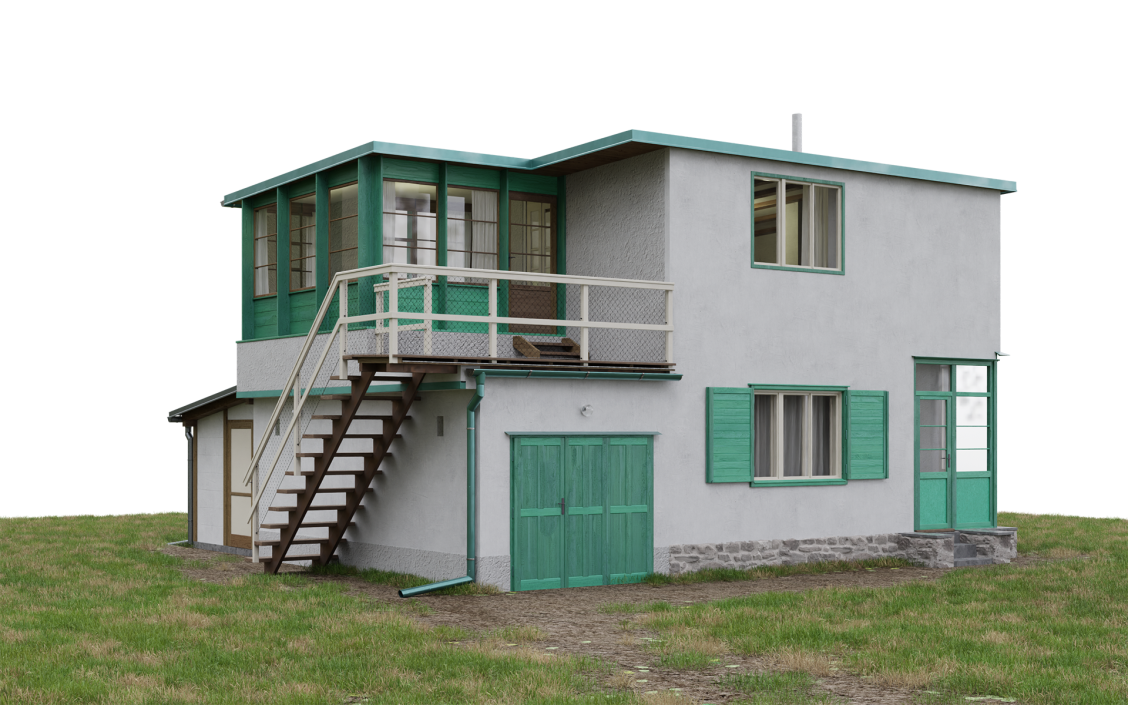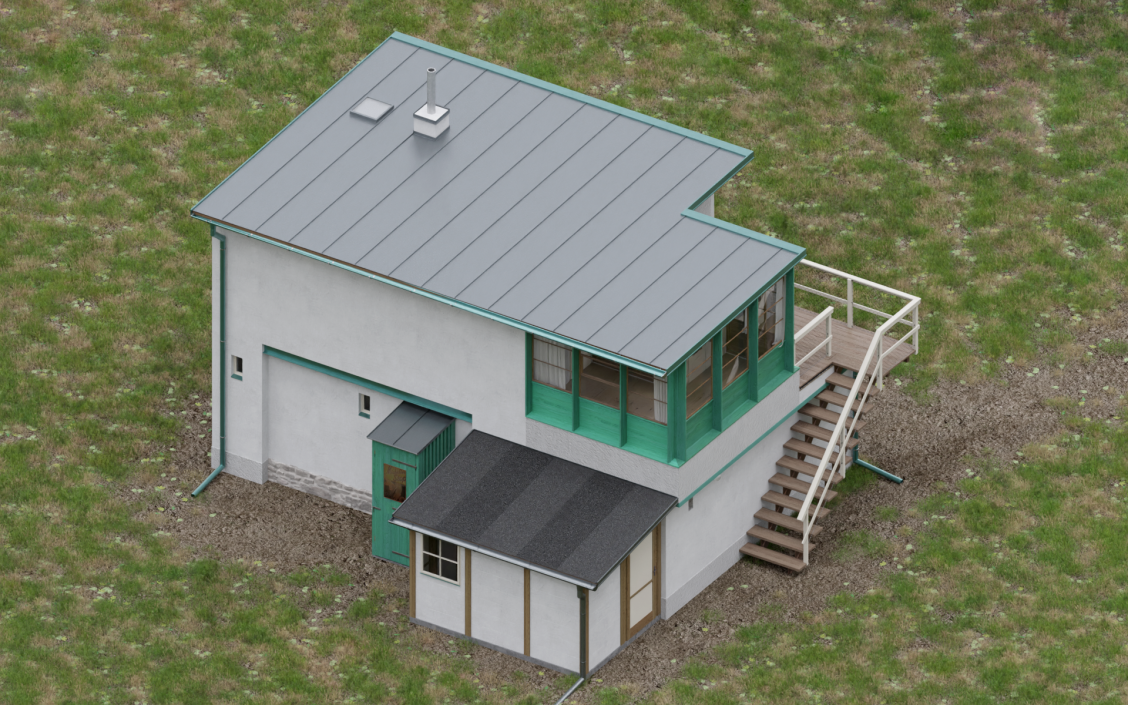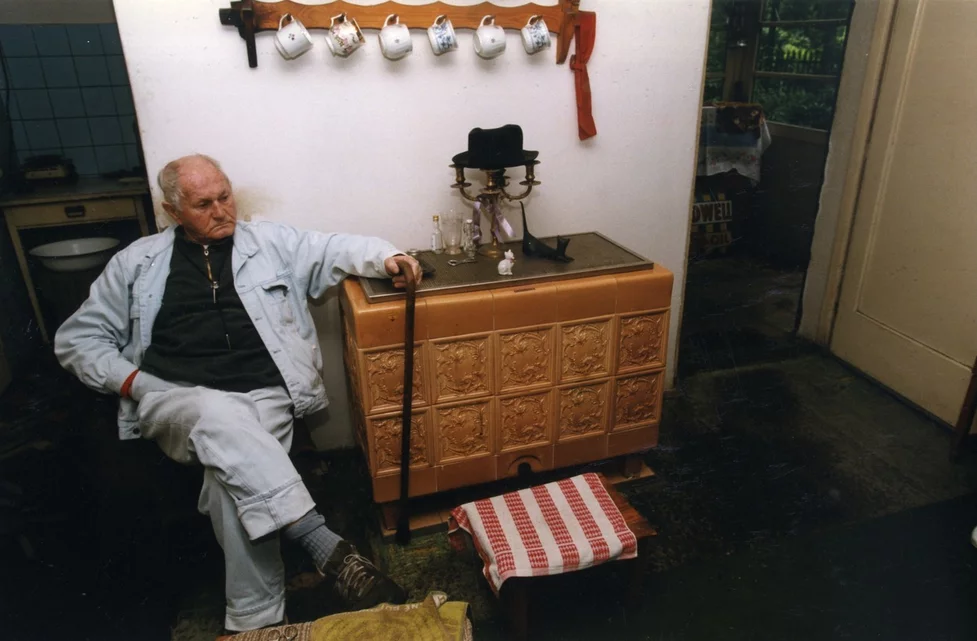"You sniff and you smell Hrabal." How is the team from the Faculty of Architecture of the CTU working on making the famous writer's cottage in Kersko accessible?
2/6/2023

In the course of the work, you reportedly fundamentally changed the overall concept of the repairs?
JZ: The cottage has undergone several modifications, elements have been added and disappeared. Due to the additional interventions, at first we thought we would take the space in a modern way and fill it with photographs or texts. In the end, however, the idea of returning the authentic furnishings and starting to make structural modifications to make the cottage look like it was in Bohumil Hrabal's time.
EH: We had a commission from the Polabský Museum, but we reduced it several times. There was also the construction of another building, larger than the cottage itself, to accommodate the originally requested facilities. We tried to prove that if we wanted to preserve the authenticity of the place, the program had to be changed.
How did the investor react when you significantly modified the construction program?
EH: In the end they were thrilled, I don't think they could have imagined it. When they approached us, they had a vision, but not a clearly validated idea. There have been student proposals for the cottage conversion elsewhere in the past, but again with a very unrealistic and challenging assignment. The result was a solution many times larger in capacity for dozens of people, conference rooms and bus parking.
MČ: Our design preserves the authenticity, plus it will make the whole construction cheaper and significantly speed up the opening of the cottage to visitors.
You are designing the background into two outbuildings that Bohumil Hrabal used as sheds, but which have now been demolished. So how has the cottage evolved over the years?
JZ: Bohumil Hrabal bought the cottage from the Trnka sisters, who built a ground-floor house with a walled roof in the 1940s. Between 1967 and 1970 Hrabal added a garage and an upper floor with a storeroom (a glass room, from the German word for guardhouse, the same name for railway houses by the railway). He mostly wrote outdoors because he sought open space. When the weather didn't allow it, he used the storeroom.

Was Hrabal a handyman?
EH: He was more of a collector.
MČ: Not only books and paintings, but also building elements. On the south façade, for example, window panes from the 1940s remain, in some places there are newer windows, in others he has replicated older models. The storeroom, for example, has very subtle frames and must have involved quite skilled craftsmen.
EH: At the same time, he was lighting the area with an antler lamp for which he had no electricity. So he ran the power through a cord to a distant socket. Several phases changed in a short time, and further significant modifications took place after Hrabal's death.
Can you give us a tour of the cotta
MČ: Downstairs is the main living room, which is accessed via a glazed porch. Hrabal had the kitchen separated by a partition, which the next owners demolished to create a counter bar. Put the wall back, and the space is actually more cramped. The Hrabal's kitchen was made up of several different pieces of furniture, but had no running water, only a sink.
EH: The garage used to be not connected to the living room at all. The last owners built a contemporary bathroom in the middle. However, Hrabal's car will remain on display in Nymburk. He did not park much in the garage, it served as a storage room for books and belongings. We will use it for a ticket shop and other items.
MČ: From the living room you go up the wooden stairs to the upstairs bedroom, from there you can enter the storeroom with benches and a large table. A beautiful closet door was propped against the wall, serving as a bulletin board for collages and photographs. Finally, you reach the terrace.
Where did Hrabal sleep?
EH: Variously, but probably often his wife slept downstairs and Hrabal worked upstairs into the night. And sometimes when he returned late in the evening, he used the outside staircase, went in through the storeroom and didn't wake her.
How did you create the proposal for restoring the space to what it was in Hrabal's time?
JZ: It was something. Mrs Kavánová from the Polabský Museum supplied us with a number of pictures of Hrabal and his guests, but no one took pictures of the space directly. We had to piece together the interior from them. For example, we found a corner of a painting that we already knew where it was from another photo, so we moved on again. For example, we also used a German press office to get the photos. You can also catch a glimpse of Hrabal and the back of the cottage for a few seconds in A Feast of Snowdrops.

What items will return to the cottage?
EH: We managed to find a number of equipment in the surrounding cottages, as Hrabal had donated some of it to his neighbours. Some pieces of furniture will have to be made as replicas according to the photographs. At first it looked like we would not be able to find almost anything from the original furnishings, so we were also leaning towards a more modern interior design. Hrabal had hundreds of small things and books in the cottage that are hard to return, but we will try to bring the basic concept as close to the visitor as possible. The walls were covered with paintings by the writer's friends, such as Jan Jíra and Jiří Anderle. These will return in the form of copies and digital prints.

But you had to change a number of things for the current operation. For example, how do you deal with heating?
EH: Hrabal heated the main room with solid-fuel stoves, which he later moved to the bedroom and installed a Vamberesque tile stove in their place. The identical piece that stood on the site will probably be refurbished and will continue to function. You sniff and you smell Hrabal.
MČ: Otherwise we didn't want to come up with complicated solutions, the upper space or garage will be tempered by electric underfloor heating and the solid fuel stove will only be an exhibition piece.
What other changes do you need to address for visitors?
MČ: We are still dealing with the handrail on the inner staircase, which Hrabal apparently never had there. At the same time, we don't even have a photograph of the staircase.
Was the cottage a meeting place?
JZ: A number of personalities took turns in Kersko, but we do not know whether they stayed overnight. Most of the photos with friends are from upstairs and on the terrace. The ground floor was visited by Hana Hegerová, for example, and we have a photo of her walking out of it into the garden. The lower part was probably more private. He also let his cats out there, unlike upstairs.

You are working with a multidisciplinary committee on the reconstruction. Are they strict on you?
MČ: Interesting suggestions are coming from them. For example, the literary historian Jakub Češka drew our attention to Hrabal's need to see the sky and open space and argued for the return of the skylight on the first floor, which we were deciding whether to leave out because it is a difficult technical detail due to the slope of the roof. But it was important for Hrabal that he could look at the stars directly from his bed.
When introducing the project, Václav Girsa noted that your solution is not only authentic but also economical.
MČ: If the local government buys another building that it will have to take care of, the investment is of course subject to discussion. Thanks to our concept of adding a minimum of new material while carefully considering whether the existing structures can be preserved, we save quite a lot of money. The downside of major renovations is that sometimes functional elements are replaced.
The exhibition should show Hrabal in the Kersko version. It is said that he lived a bit of two lives, one in Prague and the other here. He also had two groups of friends that didn't mix so much. The exposition will also place great demands on the guides, as there will be no captions and all the additional information will have to be conveyed by them.
How has Kersko itself changed?
JZ: Extensively, large family houses with a number of garage spaces are being built here, reaching up to 400 square metres of floor space.
MČ: I think that in the future the building will be valuable not only as a reminder of the famous writer, but also of the local cottage industry. Today we take this phenomenon for granted, but it is fast disappearing on the lucrative land in Kersko. The cottage and the land will be a testament to a time and a life that we look back on in A Feast of Snowdrops but has faded away in recent years.
The interview was led by Pavel Fuchs
